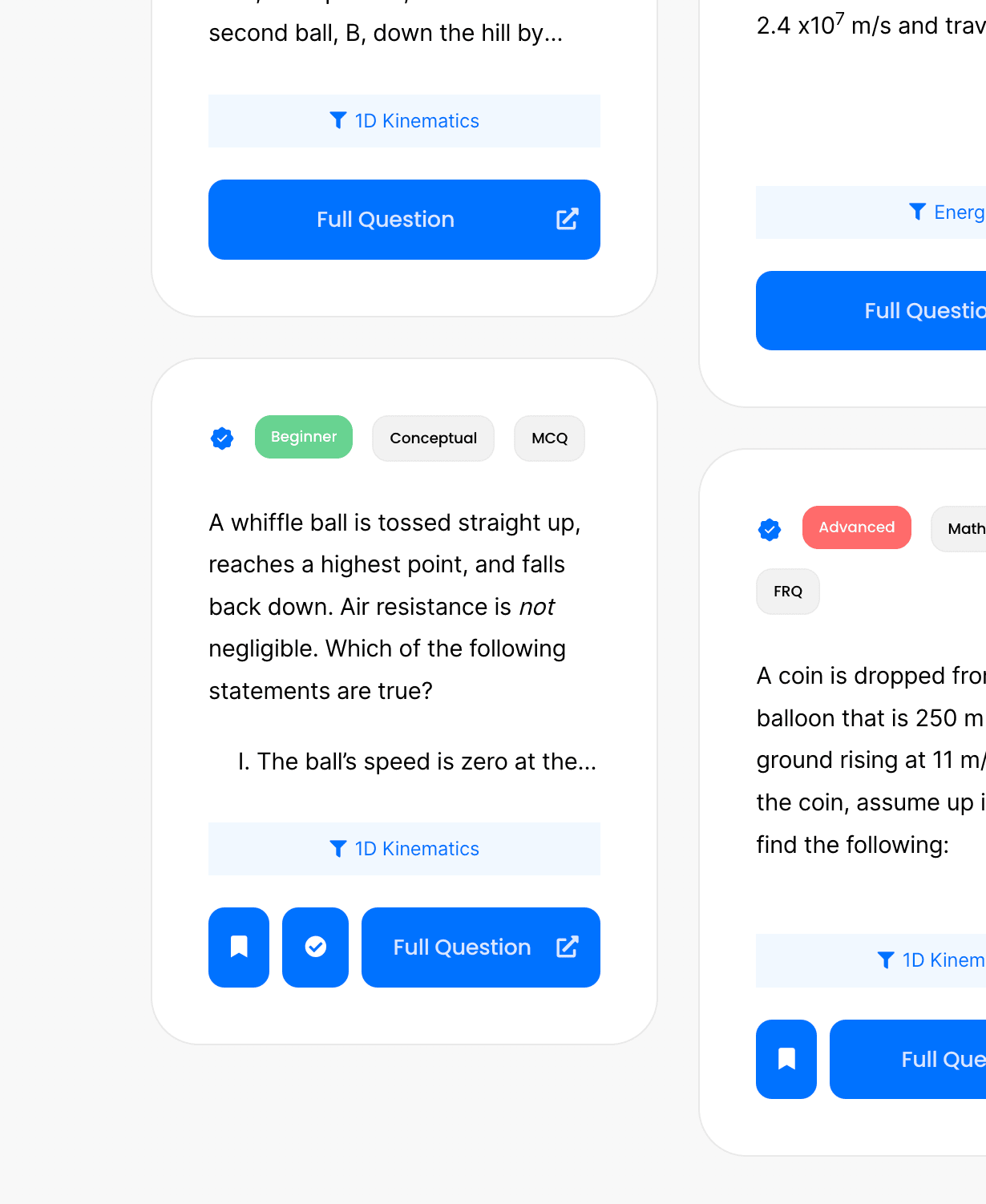From the top of a \( 74.0 \) \( \text{m} \) high building, a \( 1.00 \) \( \text{kg} \) ball is dropped in the presence of air resistance. The ball reaches the ground with a speed of \( 31.0 \) \( \text{m/s} \), indicating that drag was significant. How much energy was lost in the form of air resistance/drag during the fall?
Why is more fuel required for a spacecraft to travel from the Earth to the Moon than to return from the Moon to the Earth?
An object of unknown mass is acted upon by multiple forces:
The coefficients of friction are \(\mu_s = 0.6\) and \(\mu_k = 0.2\). Starting from rest, the object travels \(10 \, \text{m}\) in \(4.5 \, \text{s}\). What is the mass of the unknown object?
Which of the following position vs time graphs represent an object having zero acceleration?
Caleb is filling up water balloons for the Physics Olympics balloon toss competition. Caleb sets a \( 0.50 \text{-kg} \) spherical water balloon on the kitchen table and notices that the bottom of the balloon flattens until the pressure on the bottom is reduced to \( 630 \frac{\text{N}}{\text{m}^2} \). What is the area of the flat spot on the bottom of the balloon?
A block starts at rest on a frictionless inclined track which then turns into a circular loop of radius \( R \) and is vertical. In terms of \( R \) and constants, find the minimum height \( h \) above the bottom of the loop the block must start from so it makes it around the loop.
A sled glides across ice and eventually stops. This stopping is best explained by ____.
A ice skater that is spinning in circles has an initial rotational inertia Ii. You can approximate her shape to be a cylinder. She is spinning with velocity ωi. As she extends her arms she her rotational inertia changes by a factor of x and her angular velocity changes by a factor of y. Which one of the following options best describe x and y.
Can an object have a non-zero distance and zero average speed?
A baseball is tossed from street level by a student straight up at a speed of \(25.3 \text{ m/s}\). After reaching maximum height, it is caught by another student on the roof of a building, \(17.4 \text{ m}\) above the street. How long did this take?
 Above is the graph of the velocity vs. time of a duck flying due south for the winter. At what point might the duck begin reversing directions?
Above is the graph of the velocity vs. time of a duck flying due south for the winter. At what point might the duck begin reversing directions?
A stone is thrown vertically upwards with a speed of \( 20.0 \) \( \text{m/s} \). How fast is it moving when it reaches a height of \( 12.0 \) \( \text{m} \)?
By continuing you (1) agree to our Terms of Use and Terms of Sale and (2) consent to sharing your IP and browser information used by this site’s security protocols as outlined in our Privacy Policy.
Quick Start Guide
AP physics 1, AP C, honors and advanced physics students.
Quickly filter questions by units and more.


Here’s guide to using 5 UBQ filters.
GQ = general question, MCQ = multiple choice, FRQ = free response.


Click the check or bookmark button.
Now you’ll be able to see completed or bookmarked questions at a glance!
Answer keys, personalized for you.

Phy will be responsible for grading your FRQs and GQs.
No more copy and pasting. Just solve and snap.
Questions for Mastery

By continuing you agree to nerd-notes.com Terms of Service, Privacy Policy, and our usage of user data.